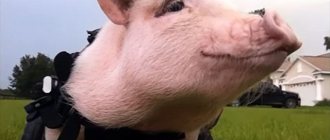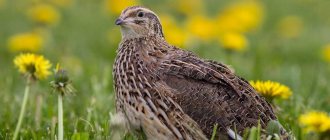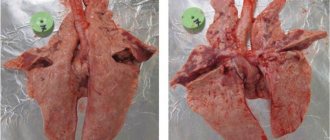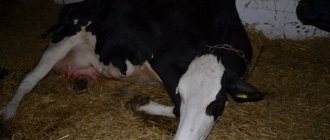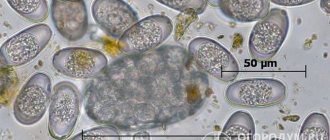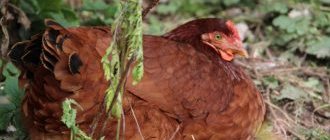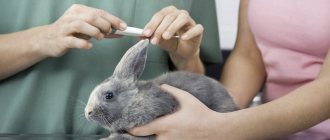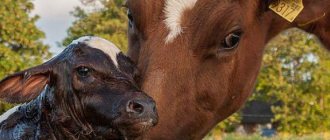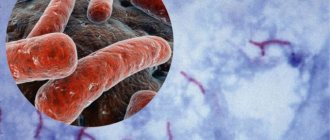Disease in sheep, like any other animal, adversely affects the rest of the herd, so sick sheep should be treated in an isolated room. Sheep are very important creatures on the farm and for business, the entire population cannot be allowed to die out or be completely infested.
Infected milk or meat should no longer be consumed by humans. It is necessary to carefully analyze what diseases sheep have and how to treat them.
Classifications
Any disease has a certain classification, which contains a number of complex and simple diseases:
- Non-infectious – diseases of the gastrointestinal tract or lungs.
- Infectious – caused by viruses.
- Parasitic - due to ticks, worms and other parasites.
Depending on the diagnosis and proper classification, the animal is provided with assistance and a full range of procedures. It is also important to prevent sheep diseases.
General symptoms
Whether it is a cold or worms, the disease will certainly manifest itself with the help of the main symptoms. Sheep are not strong animals, like a goat.
That is why she requires more careful care and attention:
- A state of complete apathy or nervous excitement.
- Complete refusal of food or slight lack of appetite in the animal.
- Depressed and faded condition of fur, skin, horns.
- Conjunctivitis or dull eyesight.
- Uneven gait.
- Change in body temperature for the worse.
- Improper functioning of the gastrointestinal tract.
When purchasing lambs, you should pay attention to their general condition. It is better to first familiarize yourself with sheep diseases and their symptoms in order to clearly understand the purchase idea. Most sellers are capable of lying about the health and quality of the product.
Non-communicable diseases of sheep
Pneumonia
One of the most common non-contagious diseases of these animals is pneumonia.
In most cases, lambs get it. The main factors provoking pneumonia in young sheep are drafts and dampness.
In addition, certain types of gases (for example, hydrogen sulfide and ammonia) that accumulate in enclosed spaces with large crowds of animals can cause the appearance of this disease. The main external symptoms of this disease are cough, loss of appetite, frequent and difficult breathing. Sometimes a purulent runny nose appears and body temperature rises (up to 41 degrees Celsius).
Pneumonia is treated mainly with antibiotics: neomycin, streptomycin, benzylpenicillin, Biovit-80 and others, as well as sulfonamide drugs. Treatment has the greatest effect in the early stages of the disease.
Gastrointestinal diseases
Diseases of the digestive system of sheep are also non-contagious. One of these common diseases is rumen flatulence. This disease is caused by low quality feed.
The essence of this disease is that one of the chambers of the sheep’s stomach (in other words, the rumen) stops working.
Symptoms: loss of appetite, bloating, anxious behavior.
The removal of excess gases in order to restore normal functioning of the rumen is carried out using a special tube, which is inserted into the stomach through the animal’s mouth. If this method does not work, the gases are removed by piercing the stomach chamber.
Other common diseases of this type are various kinds of poisoning, which are caused by poisonous types of grass eaten by animals on pastures. External signs of poisoning include vomiting, diarrhea, lack of appetite and stoppage of the stomach.
In most cases, it is treated by rinsing: a solution of Glauber's salt (in proportions of 50-100 grams of salt per 500 milliliters of heated water) and vegetable oil in an amount of up to 100 grams are poured into the throat of a sick animal.
White muscle disease
Lambs are susceptible to this disease. The essence of this disease is muscular dystrophy and skeletal dystrophy. White muscle disease is caused by a lack of vitamin E in the baby’s body, as well as selenium, cobalt, phosphorus, copper and manganese.
Unfortunately, this disease has no cure, but there are effective measures to prevent it. In order to prevent white muscle disease in lambs, special additives rich in minerals and vitamins are mixed into the feed of ewes. There are similar special supplements for newborn babies that include vitamin E and essential minerals.
More on the topic: The benefits and harms of lamb fat
Bezoar disease
If the sheep's diet is not chosen correctly, they may eat their own wool.
The result of such “nutrition” is the appearance in the gastrointestinal tract of a lump of wool or undigested fibers of eaten plants.
Lambs whose uteruses produce little milk are especially prone to getting sick. Symptoms: loss of appetite, animals groan and behave restlessly. There is no effective treatment for this disease.
Foot rot (paronychia)
It’s a stretch to classify this disease as non-contagious, since animals themselves are carriers of pathogenic bacteria. However, direct contact between a healthy and sick individual is not required for disease transmission. Bacteria are transmitted indirectly through soil, litter or other contaminated surfaces.
The essence of hoof rot is inflammation of the hoof pulp of a bacterial-purulent nature. Externally, the disease manifests itself as increased sensitivity of the hooves, difficulty moving the animal and lameness.
To prevent foot rot, sheep's hooves are regularly disinfected and trimmed. This disease, albeit indirectly, can affect up to half of the entire herd, so it falls somewhere between the contagious and non-contagious group of sheep diseases.
Non-communicable diseases
The defeat is aimed at only one animal and is not dangerous for the rest of the herd. Treatment of diseases in sheep of this type should not be delayed, otherwise the animal will suffer greatly.
Pneumonia is the most famous and common pathology that occurs when an animal stays for a long time in damp and unventilated areas.
Hoof rot affects one of the most important parts of the body – the hooves. They begin to rot and bleed, causing the sheep to be unable to move normally.
Ketosis is a pathology in the body that occurs due to a violation of the amount of proteins and carbohydrates in the body of an individual.
Infectious mastitis
Pathogens cause damage to the most vulnerable group of animals - nursing queens and young animals. Moreover, primiparous uteruses suffer more often and more severely than older animals. Non-nursing queens do not get sick at all.
The source of the problem is bacteria-carrying sheep. They can spread pathogens for a long time (up to 10 months). The microbe is excreted in the mother's milk, transmitted to the lambs, and they, in turn, pass it on to other lambs or queens by excreting the microbe through nasal discharge. This happens cyclically, involving more and more new individuals in the process.
The main signs of infectious sheep mastitis develop in different animals at different rates. Some, a couple of days after infection, already show the first symptoms of the disease. They experience weakness, inactivity, refusal to feed, redness of visible mucous membranes, increased heart rate and breathing. Infectious mastitis develops. The udder swells, becomes hot and painful. Swelling from the udder moves to the stomach and chest, and then to the thighs. The skin in these areas is cold, painless, and bluish in color.
The genitourinary system is also involved in the inflammation process. Therefore, signs of inflammation of the uterus appear - viscous mucous discharge begins to flow from the genital slit. Milk disappears completely, breathing and pulse become weak. Animals stop reacting to their surroundings and soon die.
In another development of the disease, animals first begin to develop large amounts of nasal discharge. The lambs lie down more, while trying to drink a lot, diarrhea begins, exhaustion progresses, the swelling does not subside, and the milk also disappears completely. Animals try to touch the udder as little as possible when moving; they stand and walk with their legs spread wide apart. Gradually the process drags on and becomes chronic.
Other infections immediately penetrate the body of an already weakened animal, thereby complicating the process. The lungs of the yams are affected and they develop pneumonia. The same pattern of development is observed in lambs infected from the uterus. First, pneumonia appears, then the stomach and intestines are affected, and with progressive exhaustion, the lambs die.
Treatment of individuals with infectious mastitis should begin immediately, immediately after the slightest signs of the disease appear. Broad-spectrum antibiotics with a prolonged effect help well. These are drugs from the group of penicillins, streptomycins and chloramphenicol. At the same time, treatment of the udder itself begins. For this purpose, the introduction of drugs such as Mastisan, Masticide and their analogues is used.
To prevent the occurrence and spread of mastitis, it is important to monitor the condition of your animals, regularly examine them, keep them clean and respond quickly when the first signs of infection are detected.
Parasitic diseases
Parasitic diseases of sheep are very common among livestock. Almost every type of animal has at one time or another needed deworming or treatment of the body for a tick-borne infection.
Fascioliasis is an infection with flat helminths localized in the biliary tract. Fascioliasis can be treated only with antihelminthic drugs Alvet and Frubendazole.
Sheep clipper - features of choosing equipment for shearing and tips on optimal setup of the device (110 photos)Sheep shearing: optimal timing, methods, techniques and features of shearing at home (125 photos)
Edilbaevsky sheep: description, breeding rules and features of caring for the breed at home (85 photos and videos)
Coenurosis is a disease caused by nematodes that affect the brain of a sheep, leading to complications for the animal. Sometimes an individual begins to behave violently or be afraid of all sounds. These problems arise due to irreversible damage to the brain.
Scabies scabies is a scabies infection caused by an infected mite.
To exclude possible diseases, sheep should be given timely medical care and vaccinations. It is also important to keep the animal clean.
